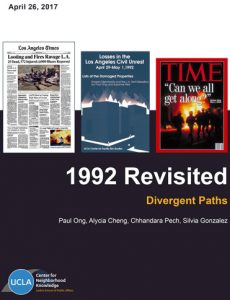MPP/MD Student Wins Health Equity Challenge
The inaugural Health Equity Challenge, a competition among UCLA graduate students aimed at developing community-based solutions to health equity issues in California, has given one of two grand prizes to Alma Lopez, who is pursuing a dual master of public policy and doctor of medicine degree. Lopez partnered with the South Los Angeles nonprofit SHIELDS for Families to develop a proposal to provide online peer support, in English and Spanish, for mothers of color who are experiencing perinatal depression. Thanks to the Health Equity Challenge, made possible by the UCLA Center for Health Policy Research and the MolinaCares Accord, SHIELDS will receive $50,000 to implement the pilot program. “If successful, this could serve as a model for group interventions to address maternal mental health conditions in other urban communities of color,” said Lopez, an aspiring OB-GYN. The competition invited graduate students to submit applications proposing innovative interventions to address health equity issues in the state. Ten finalists received $2,500 stipends and 10 weeks of mentorship to develop a full project proposal. The two grand prize winners, Lopez and UCLA medical school student Angelica Johnsen, were announced in June. Other finalists with connections to UCLA Luskin include Lei Chen, a social welfare doctoral student whose proposal sought to meet the needs of older immigrant adults seeking health care and social services; and Annalea Forrest MSW/MPH ’22, who proposed building an integrated health platform to bring psychotherapeutic services, trauma-informed exercise and nutritional counseling to marginalized communities Los Angeles.

